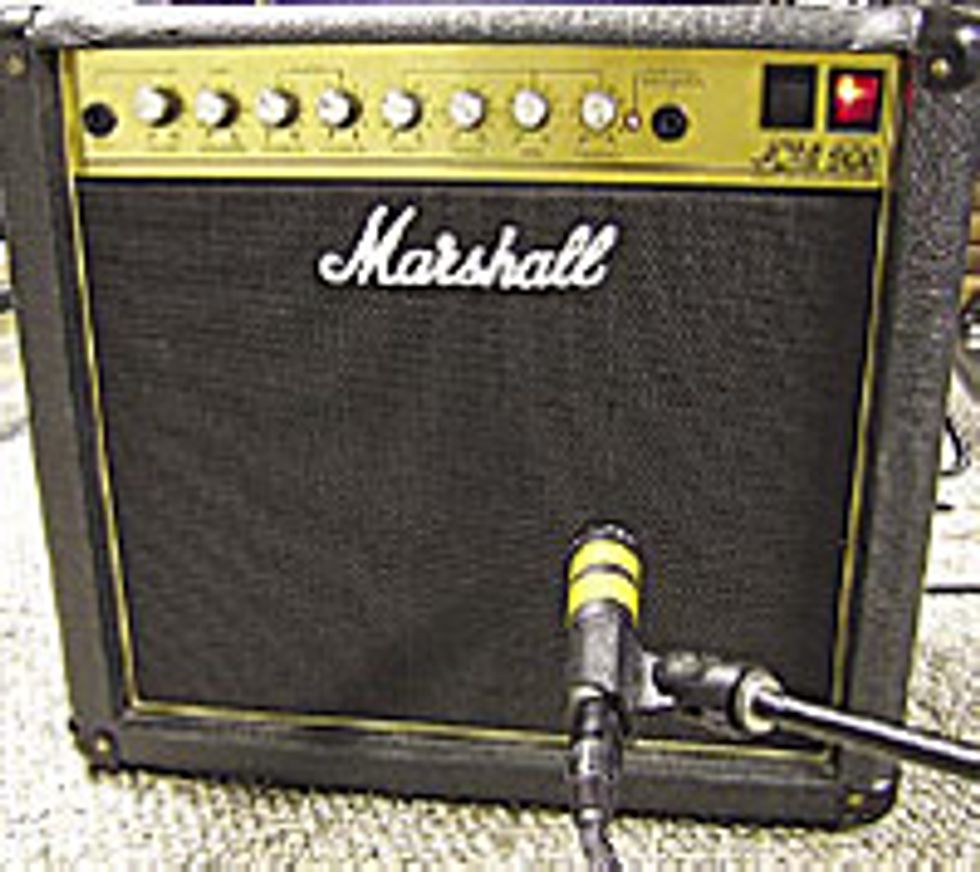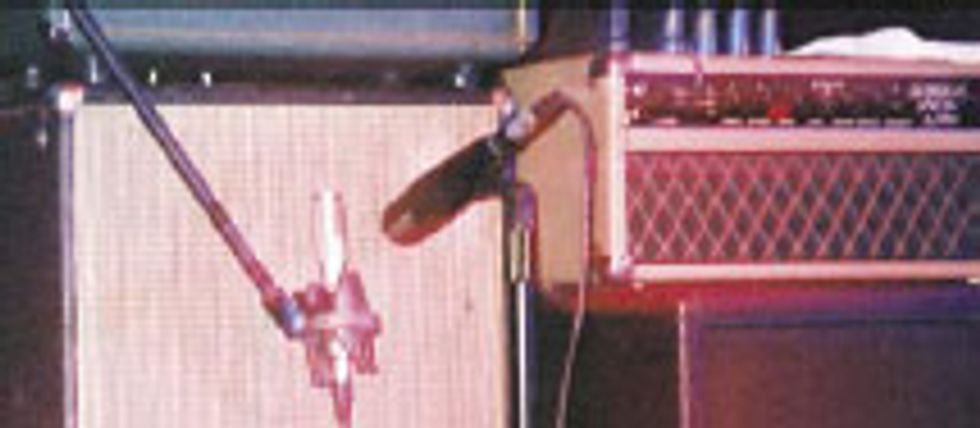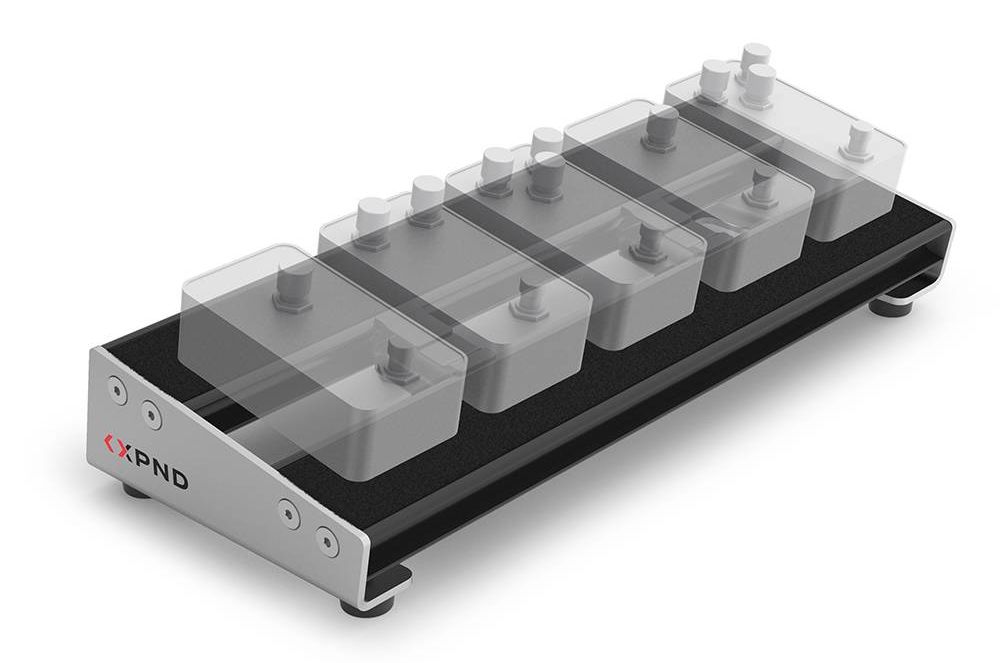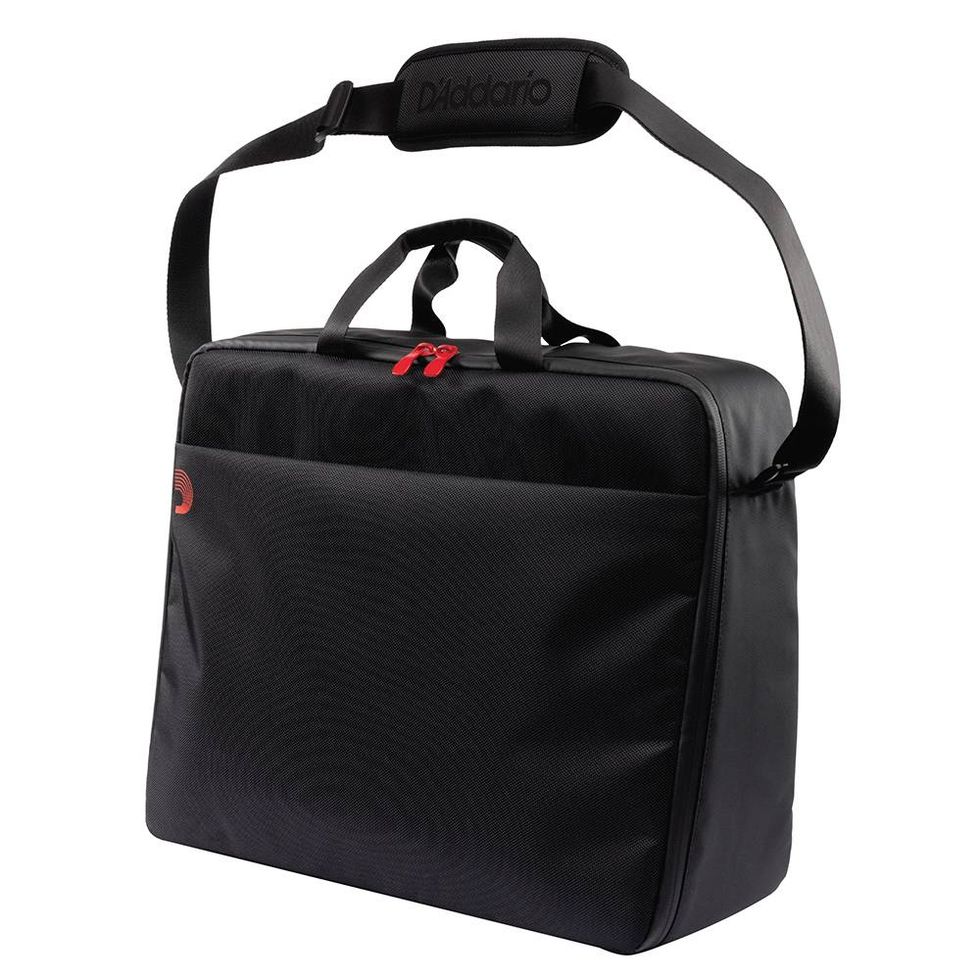You’ve worked hard on your tone. You’ve got the settings on your amp and effects dialed in. How do you go about capturing that tone in a recording? In this article, we’re going to talk about the two most important things in translating that killer tone to a recording: microphone choice and position.
Make Your Choice
Since guitar amps can be loud, and dynamic microphones can take a lot of sound pressure, they’re often the choice for this application. The classic choice is the venerable Shure SM57. This is a real workhorse of a mic that, despite its relatively low price tag, finds a home in most professional studios. Its response is characterized by a pretty serious presence peak in the 5-6kHz range, which helps to bring out articulation and bite. Another popular dynamic mic is the Sennheiser e609. These mics have a broader presence peak than the SM57 that starts a little lower in frequency, giving them a warmer, slightly less cutting sound.
Condenser mics tend to be more sensitive than dynamic mics, and are often positioned farther from the speaker. They tend to have extended high frequency response, which can add a sense of “air” to recordings. Most condensers used for guitar cabinets are flatter (more even) in frequency response than dynamics. The AKG C414 and Neumann U87 are common choices for this application.
Ribbon mics are a special type of dynamic mic that tend to be very natural sounding. They usually have more proximity effect (boost of lower frequencies when placed close to the source) and smoother top end. Older ribbon mics were very sensitive and could be damaged by a loud amp, but modern ribbons like the Royer R121 and AEA R92 are built to withstand guitar amp volumes. 
Once you’ve decided on a mic, you have to figure out where to put it. The center of the speaker cone puts out the brightest sound, and placing the mic closer to the surround gives a little mellower tone. You can also angle the mic instead of pointing it straight at the speaker. Again, angling toward the center of the cone will be brighter, and angling toward the edge will be mellower.
Typically, guitar amps are miked close up — from a few inches away to right up against the grille cloth. When the mic is that close, very small adjustments in position can make a huge difference. Try listening on headphones as you move the mic to make sure it’s getting the sound you want.
You can also use a distant mic if you want to capture more of the room tone. This is where condensers often outperform dynamics, though dynamics can work well in this application. Try this: put your finger in one ear to close it off, and then walk around the room listening through the other ear while someone else plays, until you find the sweet spot in the room where the amp sounds the best. If you place a mic at that position, you should get a good representation of what the guitar sounds like in the room. 
I was fortunate enough to help record Sonny Landreth’s live record, Grant Street. Sonny used a variety of guitars, including a ‘68 Strat and a ‘60 sunburst Les Paul, plugged into a Dumble Overdrive Special and a Matchless DC30, each powering a road-worn Fender 2x12 cabinet. The cab for the Matchless was on-stage, and a Royer R121 and a Sennheiser MD421 were placed about three inches off the speaker. To keep the stage volume down, the Dumble’s cab was isolated off-stage, where it was miked with an R121 three inches off the speaker, and a Neumann MK185 condenser mic about three feet back to capture air and room sound. Check out the album to hear the final result!
David Klausner has been playing guitar and bass professionally for over 25 years. He has owned his own commercial studio, and worked at major studios in New York and Philadelphia. He is a Sales Engineer at Sweetwater.
david_klausner@sweetwater.com
(800) 222-4700 ext. 1314.



















![Rig Rundown: Russian Circles’ Mike Sullivan [2025]](https://www.premierguitar.com/media-library/youtube.jpg?id=62303631&width=1245&height=700&quality=70&coordinates=0%2C0%2C0%2C0)






